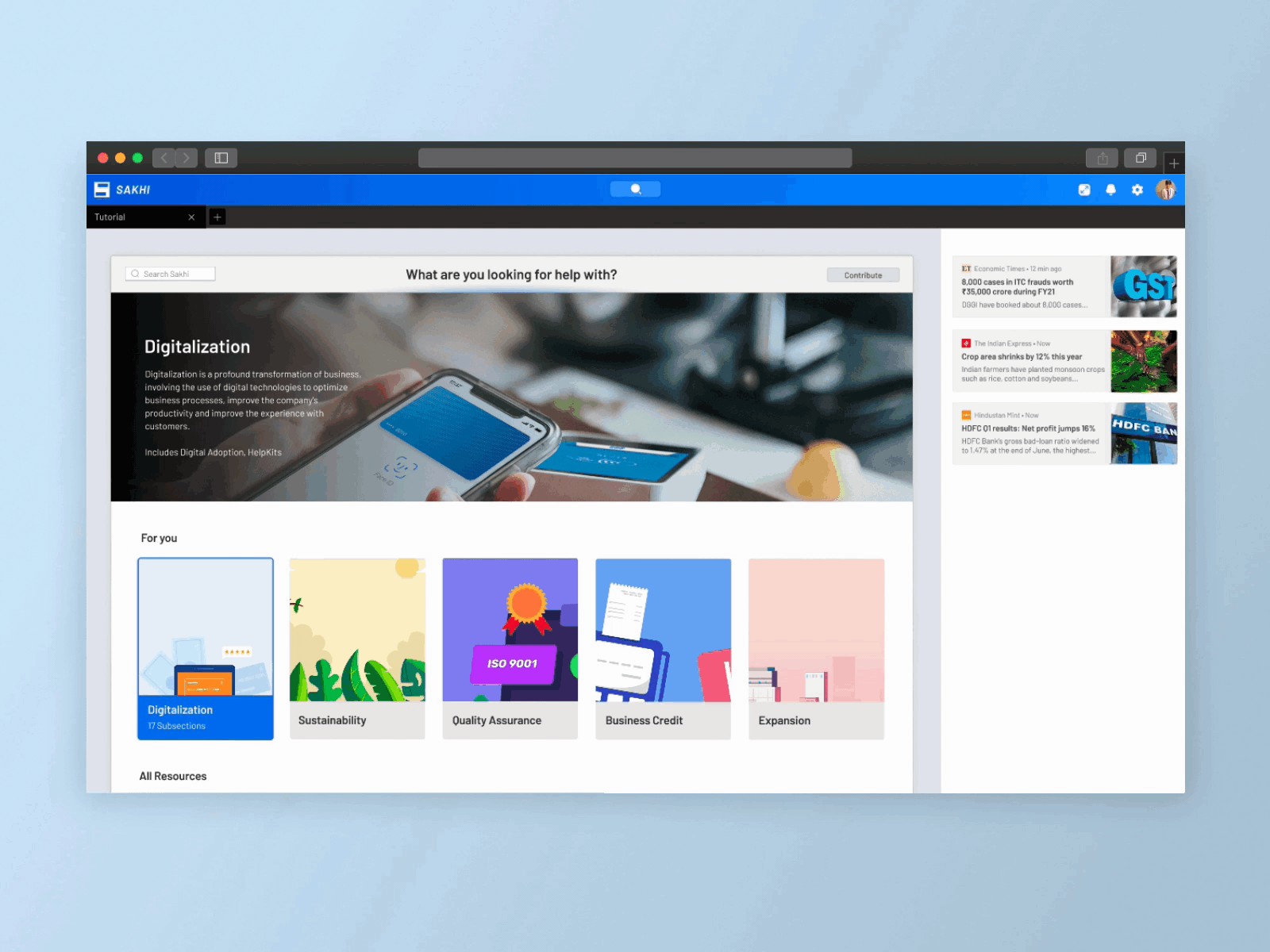top of page
Designing a Suite of Applications to help people escape poverty.
Team
Solo Project
Role
Product Design, User and Market Research, Usability Testing, Prototyping
Timeline
April 2021 - June 2021
Background
Why I choose this problem, what did I learn?
Free trade, the Internet, and International Brands have truly shaped our planet as a Global Village. But this Village is full of Inequalities at all levels. As an Indian Citizen, I've always seen debates around Intranation Inequalities, But I've never seen many debates around Internations Inequalities.
I learned a lot about how the economy works, financial terms, etc. From the Design perspective, I learned the application of many different research and testing techniques. Improved my design and Prototyping skills.
Project Vision
Goal, aim and Objectives
The main objective is to facilitate reduction in poverty levels among masses and at the same time increasing their income levels which in turn increase their standard of living and Quality of life. These goals could be achieved by increasing citizen's purchasing capacity, facilitating better fiscal health of government and organisations and more.
Overview
Project Direction
Shaping the Solution
India is categorized as a lower-middle-income country by the World Bank. India needs many structural reforms, consumer attitude reforms, education reforms, and more to attain both short ( $5 trillion economy) and long-term goals.
The project is moving in the direction of improving the country's economic health, largely through wealth generation and distribution. Referring to other countries' reforms and assessing bottlenecks to come up with solutions that would assist us to reach our aim.

Understanding the Terminology
For a better understanding of the Solution, I've listed a few key terms and concepts that are important to us. These terms and concepts have been utilized in various places and form the foundation of the project's path.


Wealth generation
Wealth in a community can be created in multiple ways, but the goal of every society/government is to create wealth through a growth-led path. on the right, I have visualized one such path of generating higher incomes that led to higher investments and Tax collection.
Every Country has different challenges
The challenges that a country faces change throughout time and vary by region. Most South Asian countries confront similar issues, such as reducing red tape, improving infrastructure, and developing a large talent pool. They will need to invest in HDI and infrastructure on a continuous basis to achieve this.
The difficulties that European countries face, as well as their approaches to overcoming them, differ. Ireland, for example, never had a significant HDI or infrastructure problem. The difficulties in luring corporations were a problem for them. They cut taxes, enacted pro-business policies, and put money into education.
The majority of the changes and growth experienced by countries in Southeast Asia occurred during the Industrial Revolution 3.0. They were able to achieve harmony and a growth mentality as a result of their efforts. They put a lot of money into the manufacturing industry.

Indian Context
India would have to put in a lot of effort to achieve its aim of eradicating extreme poverty. Such efforts should include not only direct actions, but also the creation of an ecosystem that places India at a much higher pedestal in terms of attracting investment/wealth, developing friendly policies, eliminating social stratification, improving infrastructure, and increasing competitiveness.
Since the 1970s, India has done a good job of reducing poverty, with millions of people moving into better income groups every year. According to the Global Multidimensional Poverty Index, India moved 271 million people out of poverty between 2006 and 2016. Nonetheless, when compared to other economies such as China, Thailand, or Indonesia, performance looks to be insufficient.
The Covid Pandemic has exacerbated the situation. Using World Bank data, the Pew Research Center estimates that the number of poor people in India (those with an income of $2 per day or less in purchasing power parity) has more than doubled in a year, from 60 million to 134 million, due to the pandemic-induced recession.
The Covid pandemic resulted in high unemployment decreased consumer spending, and a shift in government development investment to subsidies, price and income support, and the construction of health infrastructure. Clearly indicating the necessity for finding a solution at the consumer level rather than at the government level, a mass movement involving all sectors was needed to get the economy and the objective of attaining net zero extreme poverty back on track.
Where do we have a chance to make a difference?
After speaking with several stakeholders and conducting my desk research, I discovered a potential intervention area: reducing the potential gap between purchasing capacity of citizens of different geographies'. The reduction can be achieved by either increased income or improved quality of life. The table illustrates how a change in income level is not directly proportional to available disposable money for two Uber drivers from India and the United States.

The data clearly demonstrates how the disparity in disposable incomes of two persons working for the same company but in different nations is widening. The rise in this situation is primarily due to the expense of acquiring the Fixed Asset required for operations, which in this case is a car. However, the cost of acquiring a vehicle does not differ as much as the variance in income levels. Car costs cannot be reduced to equal purchasing power parity, but they can be modified if production is domestic with government intervention, as well as companies, begin to offer better salaries, which can only be done if customers are willing to pay more for a ride.
Understanding how Goverment is Spending
Before moving on to the Ideation section, it's crucial to consider how the Indian government spends its money in comparison to other capitalist democracies, as well as what the economy's weak points are that are causing severe growth bottlenecks.
A few aspects that stand out here are how India's income in relation to its GDP is not up to par, resulting in lower Expenditure as a percentage of GDP. Another aspect is that we have a greater fiscal deficit, which means we have to pay more interest and loan repayments. We have a trade imbalance, which contributes to our fiscal deficit.
With only 7 Fortune 500 firms in India, the country is also missing in the development of large in-house companies. Despite the fact that the government has done a lot of work to improve the business environment. However, India requires a far stronger push in this area.
Finance, Defense, and FPD account for the majority of India's spending. All three industries do not directly contribute to wealth generation. India imports the majority of its domestic needs. In addition, India spends a lower percentage of GDP on infrastructure than some of its Southeast Asian peers, as well as a lower percentage of GDP on factors that directly affect HDI. Though it's worth noting that the government has been attempting to improve problems in recent years by investing more on infrastructure, boosting domestic industry, and regulating inflation.

Understanding Consumption of Businesses
I've used the example of two business units operating in the same consumer retail arena. One example is Reliance Retail, a large national chain of stores with an adjacent Kirana shop where we've all shopped and seen how they spend and earn.
The key takeaways were that big retail outlets have higher gross profit margins due to brand deals, self-branded products, and mass purchases compared to profit margins of a Kirana store, but when we look at net profit, the margin gap disappears because big retail outlets in India have much higher expenses than a single small store. Small businesses should also invest in any additional sources of revenue that they don't at present.

Reaching out to Consumers to understand their Spending Preferences
To gain a better understanding of the problem statement, I interviewed and spoke with a diversity of individuals to learn how people from various income groups use their disposable money and how their worries or preferences affect how they generate and consume wealth.
The main concern for individuals in the lower-income group is to find a place to live and work, regardless of the possible earnings or nature of the job. I saw that persons in the lower-income group had larger families, which contributed to their low standard of living because they now have significantly more expenses this involves not allocating sufficient resources to worker productivity. Luxembourg and Ireland, for example, have seen a rise in their living standards the improvement was fueled by a rise in worker productivity.
Education has been the most essential factor in raising the level and quality of life for individuals in the Middle Income Group. The majority of India's workforce underwent a shift from unskilled to skilled labor, resulting in greater pay. And, after speaking with a number of people in the bracket, it's evident that the emphasis is on education and stability. The focus for those in the upper-middle and upper-income groups is on developing stability through investments and a desire to improve their lifestyle.

Spent a day shadowing my friend.
To gain a better understanding of how users think when they make a decision, how businesses target them and position their offerings, or the involvement of the government in a transaction. For 24 hours, I followed my friend everywhere. He resides in a Paying Guest apartment about a kilometre from the university where he studies.
Shadowing allowed me to learn a lot about how customers choose between brands, prices, and platforms. What a meticulous attention to detail they have. How much they spend on average, store, or save. Concerning brands and their impact on final decisions. The actions that contribute directly or indirectly to their wealth creation capacity and country building are part of their daily routine.

Interesting Insights
When I floated the questionnaire to collect and analyse data, one interesting thing I saw was how younger respondents viewed Fixed deposits as an Excellent or Very Good option for their investments. They were completely unaware that the rate of interest on fixed deposits was lower than the rate of inflation.

Another intriguing finding was the wide range of Income Goals I discovered among respondents. Though it was evident that many people believed a monthly income of 71k-120k INR (1000-1700$) to be adequate. The majority of the respondents were from Delhi and were from middle-income families.

Taking the Ideas and Insights and distilling them into clear Directions

Building an Ecosystem
The liftoff from poverty is possible only if we are targeting multiple sectors at the same time, we need to create an ecosystem that promotes growth and development. There could be multiple ways we could achieve this, Government Intervention is one way.
Retail: The goal is to influence buyers' habits, increase consumption, and promote items and services that help boost the domestic industry.
Businesses: Increasing their competitiveness and preparing them for an increase in demand. Trying to assure that business procedures are altered in such a way that domestic manufacturing and wealth distribution are bolstered.
Service: In order for businesses and demand to grow, we must build a far larger and better talent pool, as well as boost employee productivity, involvement, and their income.

bottom of page





